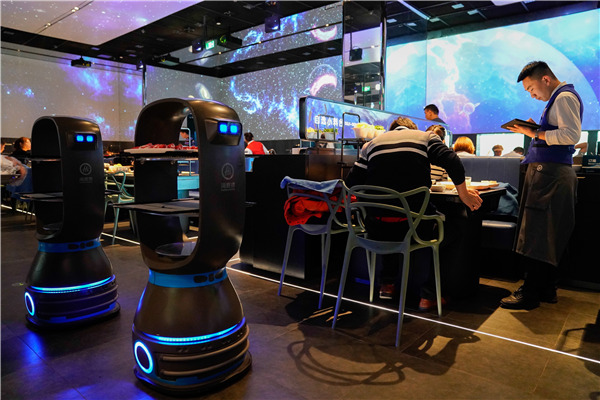Demand heats up in sizzling hotpot sector
Restaurants exploring new ways to attract customers as market continues to grow in China and overseas


"These new products also reflected our goal to be a trendy company to meet consumers' diversified demand for sustainable growth,"Zhao said.
For hotpot companies, the Chinese market is not their only area for growth.
Companies like Haidilao, Dalongyi Hotpot, Liuyishou and Little Sheep have broken into the international market.
Chengdu, Sichuan province-based Dalongyi is a good example. It has successfully opened eight overseas stores in markets such as Singapore, North America and Australia.
"It is not easy to duplicate the success in the foreign markets, due to material limits and legal restrictions. Also, competition in the hotpot sector is getting fierce as the industry has a high degree of standardization and doesn't rely much on human force," said Lei Xing, vice-president of Dalongyi.
"However, high risks also come with high returns. Compared with the domestic market, the net profit of our overseas stores could reach around 70 percent, outpacing the 50 percent mark seen at home," Lei explained.
The huge enthusiasm for hotpot among Chinese is also prying open the door for the upstream and downstream business, including e-commerce internet firms and condiment makers.
Internal data at a leading hotpot restaurant showed that in its 700 branches, the sales revenue of beer has hit 432 million yuan. To put it into perspective, that can be equal to the annual revenue of a listed beer company on average.
Another bite of the apple would be fresh food startup Miss Fresh. Its official app launched a hotpot column where customers can buy more than 500 hotpot ingredients, including chafing dish, fish, vegetables and tofu. The pitch is for those who want to eat hotpot at home.
The all-in-one online store disclosed to China Daily that the sales revenue of hotpot-related food and ingredients will notch up at least a 50 percent increase by this year's Spring Festival compared with the level seen last year.
Essence Securities senior analyst Liu Wenzheng pointed out that the concentration rate of the Chinese hotpot industry is still developing, which means there are still gaps as far as major industry players are concerned.
"The top five hotpot companies only account for about 5 percent of the industry while fast food restaurants in the United States have exceeded 10 percent," Liu said. The analyst added that hotpot companies also need to pay heed to the dangers of blind expansion along with the critical issue of food safety.




































